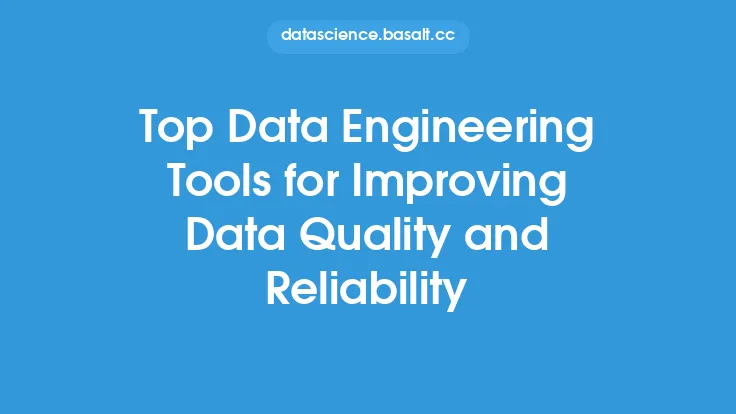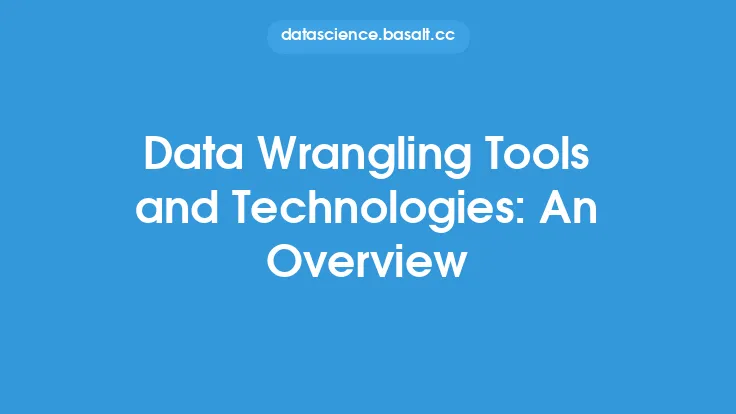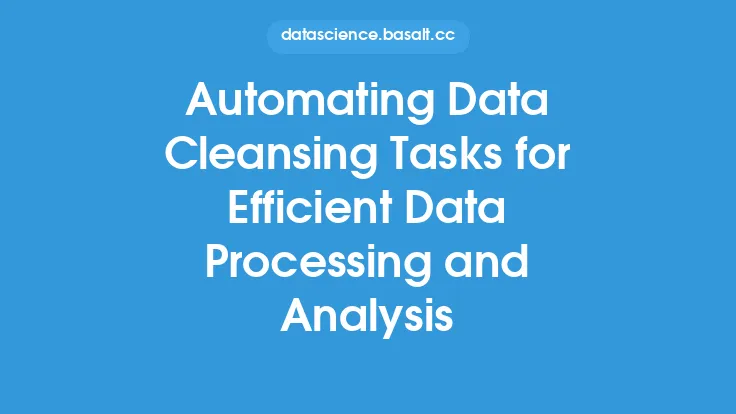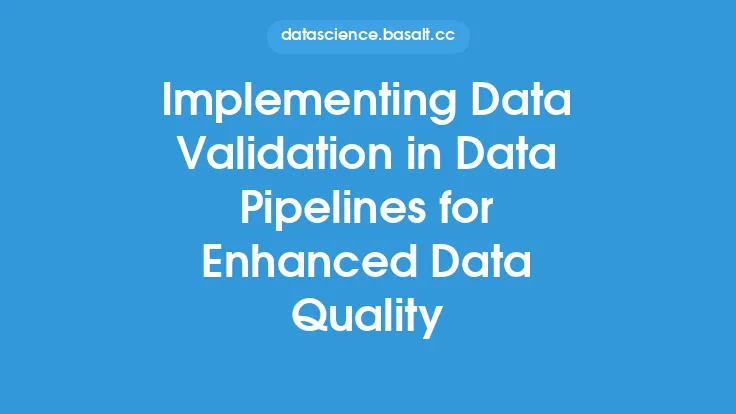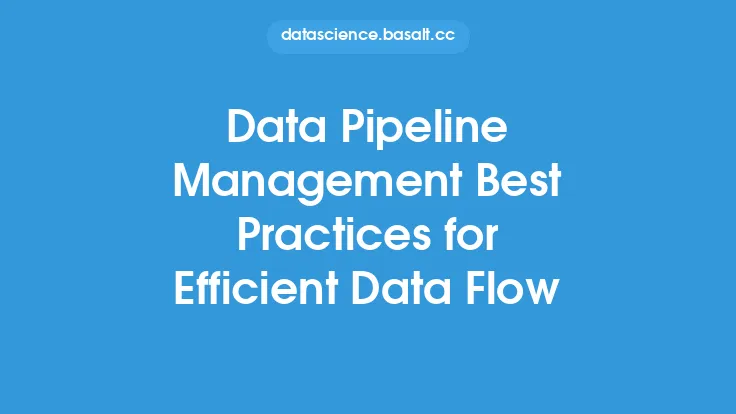Data validation is a critical component of data quality control, ensuring that data is accurate, complete, and consistent. With the increasing volume and complexity of data, organizations need efficient data validation tools and technologies to maintain high data quality. In this article, we will explore the various data validation tools and technologies available, their features, and how they can be used to achieve efficient data quality control.
Introduction to Data Validation Tools
Data validation tools are software applications or libraries that help organizations validate data against a set of predefined rules, constraints, and formats. These tools can be used to validate data at various stages of the data lifecycle, including data entry, data processing, and data storage. Data validation tools can be categorized into several types, including rule-based systems, data profiling tools, and data quality metrics tools. Rule-based systems use predefined rules to validate data, while data profiling tools analyze data to identify patterns and anomalies. Data quality metrics tools measure data quality using metrics such as accuracy, completeness, and consistency.
Data Validation Technologies
Several data validation technologies are available, including data quality software, data governance platforms, and data validation frameworks. Data quality software provides a comprehensive set of tools for data validation, data cleansing, and data transformation. Data governance platforms provide a centralized framework for managing data quality, data security, and data compliance. Data validation frameworks provide a set of libraries and APIs for building custom data validation applications. Some popular data validation technologies include Apache Beam, Apache Spark, and Great Expectations. Apache Beam is a unified data processing model that provides a set of tools for data validation, data transformation, and data integration. Apache Spark is a data processing engine that provides a set of libraries for data validation, data cleansing, and data analysis. Great Expectations is a data validation framework that provides a set of libraries and APIs for building custom data validation applications.
Data Validation Techniques
Several data validation techniques are available, including data type validation, format validation, and range validation. Data type validation checks if the data is of the correct data type, such as integer, string, or date. Format validation checks if the data is in the correct format, such as email, phone number, or credit card number. Range validation checks if the data is within a specified range, such as a valid age or salary range. Other data validation techniques include cross-field validation, which checks if the data is consistent across multiple fields, and business rule validation, which checks if the data conforms to business rules and regulations.
Data Validation Tools for Specific Data Sources
Different data sources require different data validation tools and techniques. For example, data validation tools for relational databases, such as MySQL or Oracle, provide a set of tools for validating data against database constraints and rules. Data validation tools for NoSQL databases, such as MongoDB or Cassandra, provide a set of tools for validating data against document or key-value pair structures. Data validation tools for cloud-based data sources, such as Amazon S3 or Google Cloud Storage, provide a set of tools for validating data against cloud-based storage constraints and rules. Data validation tools for big data sources, such as Hadoop or Spark, provide a set of tools for validating data against big data processing constraints and rules.
Data Validation Frameworks and Libraries
Several data validation frameworks and libraries are available, including Java-based frameworks, Python-based frameworks, and R-based frameworks. Java-based frameworks, such as Hibernate Validator, provide a set of libraries and APIs for building custom data validation applications. Python-based frameworks, such as Pydantic, provide a set of libraries and APIs for building custom data validation applications. R-based frameworks, such as validate, provide a set of libraries and APIs for building custom data validation applications. Other data validation frameworks and libraries include JSON Schema, which provides a set of tools for validating JSON data, and XML Schema, which provides a set of tools for validating XML data.
Best Practices for Implementing Data Validation Tools
Several best practices are available for implementing data validation tools, including defining clear data validation rules, using automated data validation tools, and testing data validation tools thoroughly. Defining clear data validation rules helps ensure that data is validated consistently and accurately. Using automated data validation tools helps reduce manual errors and improves data validation efficiency. Testing data validation tools thoroughly helps ensure that data validation tools are working correctly and catching all data errors. Other best practices include documenting data validation rules and processes, providing training and support for data validation tools, and continuously monitoring and improving data validation tools and processes.
Future of Data Validation Tools and Technologies
The future of data validation tools and technologies is rapidly evolving, with new technologies and techniques emerging all the time. Some of the emerging trends in data validation include the use of artificial intelligence and machine learning for data validation, the use of cloud-based data validation tools, and the use of real-time data validation. Artificial intelligence and machine learning can be used to improve data validation accuracy and efficiency, while cloud-based data validation tools provide a scalable and flexible way to validate data. Real-time data validation provides a way to validate data as it is being entered or processed, helping to catch data errors before they cause problems. Other emerging trends include the use of blockchain for data validation, the use of Internet of Things (IoT) devices for data validation, and the use of edge computing for data validation.

